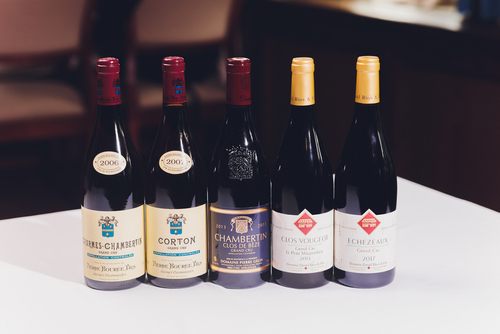If you think of Saint Emilion as awash in a sea of red grapes you might be surprised to find out that here and there lie tiny splashes of white. These discrete little pools of white grapes are part of Saint Emilion’s history and heritage for 200 hundred years ago the majority of wines produced in Saint Emilion were white! It seems hard to believe nowadays as Saint Emilion is practically synonymous with red wine.
The ancient terroir and limestone soils of the region are perfectly capable of producing some lovely white wines as well as the more recognised reds. The region didn’t switch over to producing reds until the Second Empire (the Imperial Bonapartist regime of Napoleon III from 1852 to 1870).
 In 1936 the Saint Emilion AOC was created that defines which grapes are permitted in the wines, the maximum yields, delineates location and specifies vineyard techniques etc. Prior to this all sorts of grapes would have peppered the hillsides that have since been uprooted.
In 1936 the Saint Emilion AOC was created that defines which grapes are permitted in the wines, the maximum yields, delineates location and specifies vineyard techniques etc. Prior to this all sorts of grapes would have peppered the hillsides that have since been uprooted.
In the Charentes (which lies just north of Bordeaux) the white Ugni Blanc grape (Trebbiano) is called Saint Emilion so perhaps it was once grown in Saint Emilion in the distant past?
There are some famous names amongst the Saint Emilion Grand Crus that produce a white wine – as well as some not so well known names who enjoy creating white wines either for the love of it or for historical and experimental reasons.
Amongst the famous names there are Jean Luc Thunevin’s Valandraud Blanc, Gerard Perse’s Chateau Monbousquet Blanc, Michel Rolland’s Chateau La Grande Clotte Blanc, and Bernard Magrez’s Chateau Fombrauge Blanc.
These whites aren’t recognised by the AOC Saint Emilion as this is for red wines so they are either unclassified or come under another category.
 Chateau Vieux Taillefer is owned by the Cohen family and makes an unusual white wine alongside its red Saint Emilion. Blanc de Chateau Vieux Taillefer is made from vines that are over 80 years old and is labelled Vin de Table. This is due to the fact that the grapes in the blend are not all atypical of Saint Emilion, let alone Bordeaux.
Chateau Vieux Taillefer is owned by the Cohen family and makes an unusual white wine alongside its red Saint Emilion. Blanc de Chateau Vieux Taillefer is made from vines that are over 80 years old and is labelled Vin de Table. This is due to the fact that the grapes in the blend are not all atypical of Saint Emilion, let alone Bordeaux.
The grapes are Sauvignon Blanc, Semillon, Sauvignon Gris, Merlot Blanc, Chasselas (which is more commonly grown in Switzerland but there are also plantings in the Loire) and Roussette (also known as Altesse and which is normally found in the Savoy wine region of France).
The Cohens found the vines whilst they were expanding the chateau’s vineyards after they had purchased the property in 2006 and were delighted at the discovery.
 Pierre Lavau is a third generation wine maker and owns Chateau Petit Fombrauge. Not content with only producing red Saint Emilion he planted about a hectare of white vines in 2010 because he liked drinking white wines!
Pierre Lavau is a third generation wine maker and owns Chateau Petit Fombrauge. Not content with only producing red Saint Emilion he planted about a hectare of white vines in 2010 because he liked drinking white wines!
The grape varieties he grows are Chardonnay, Colombard and Roussane (which is usually grown in the Rhone appellations of Crozes Hermitage and Chateauneuf du Pape as well as California and Australia).
Due to the fact that the grapes are not recognised as traditional Saint Emilion / Bordeaux varieties Blanc de Petit Fombrauge is labelled Vin de France.
 The Guimberteau family have owned Chateau Franc Baudron since 1923 and offer a wide range of wines from their property in Montagne Saint Emilion.
The Guimberteau family have owned Chateau Franc Baudron since 1923 and offer a wide range of wines from their property in Montagne Saint Emilion.
Not only do they make a red Cremant de Bordeaux (Sparkling Bordeaux) from Merlot and Cabernet Sauvignon grapes but they make a semi-sweet white wine (Moelleux) Grains de Soleil, a sweet dessert white wine (Liquoreux – similar to that of Sauternes and Barsac) Grains d’Automne and a 100% dry white from Semillon grapes that are about 60 years old.
These sweet wines are unheard of in Saint Emilion which makes Chateau Franc Baudron unique in producing them there!
As you can see there is much more to Saint Emilion than meets the eye!

